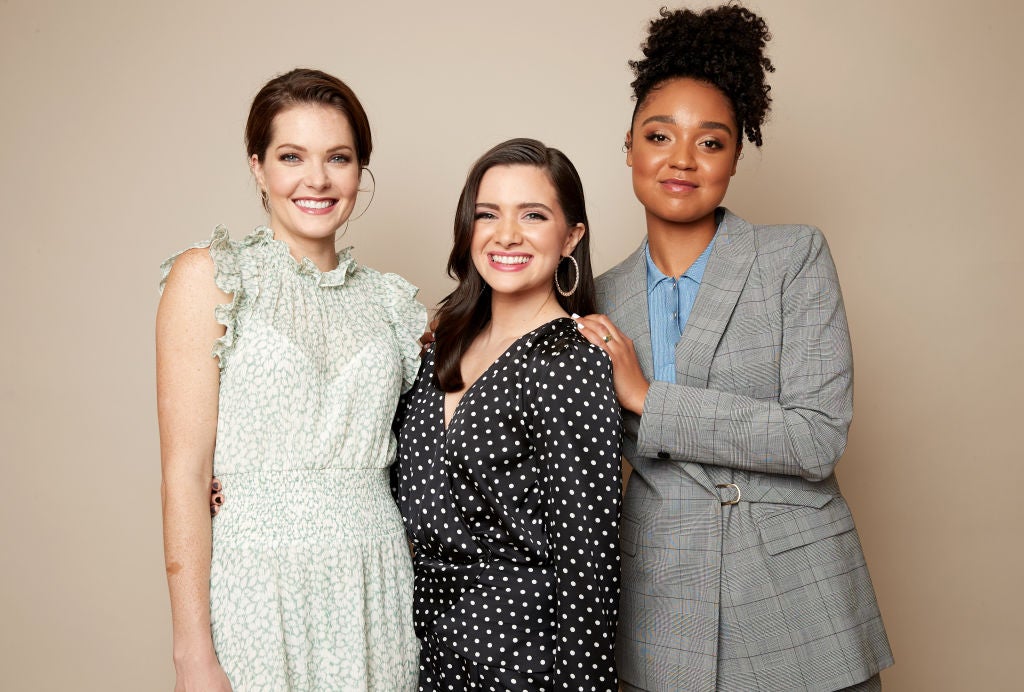The Bold Type has it all wrong – the reality for Black women working in media is very different
Blackness is not something we have the privilege of being blind to when working in the press


I opened Twitter to find the news I’d been waiting for: season four of The Bold Type was finally airing in the UK on Netflix after what felt like years of waiting. The series, which follows a group of women working in media for a global Cosmopolitan-esque magazine named Scarlet, became a welcome addition to my ever-growing conveyer belt of TV shows during the monotonies of lockdown.
There is a lot The Bold Type gets right, which is why I’ve stayed so loyal to the show. The breast cancer gene (BRCA) storyline, for one, is harrowingly touching. In the first season, we watch Jane test positive for the BRCA gene, which can lead to breast cancer. With the knowledge that her odds are higher because her mother died of the disease, the 26-year-old has a double mastectomy. Her character is sensitively depicted as she navigates the emotions that come with losing a part of herself.
There’s strong female companionship and themes of independence throughout the series. When Jane walks into Fort Greene Hospital for her double mastectomy and is asked to confirm her emergency contacts, she chooses Sutton and Kat, her best friends and co-workers, turned sisters, instead of Ryan –her ex-boyfriend (who had cheated on her). It was a beautiful montage that represents Jane’s courage to brave a surgery of such magnitude. The emphasis on friendships and sisterhood has kept me glued to the series.
But where there are opportunities to dig deeper, The Bold Type glosses over countless subjects. It relishes in harmful ‘Girlboss culture’ – a form of ‘feminism’ that centres on white women’s voices and disregards racial disparities in the workplace. As a Black woman working in media, I’ve often looked around the office and seen no one who looks like me, it’s even rarer to see Black people at a senior level. I experience frequent microaggressions, which I often push to the back of my mind to avoid making others feel uncomfortable. It’s unlikely I’d have the support or energy to have them properly addressed.
Intriguingly, The Bold Type does have central storylines depicting women of colour in the media. Kat’s is a bisexual mixed-race Black woman and Adena’s is a positive representation of a queer Muslim. However, Kat’s race wasn’t addressed for the majority of the first season. In 2017 America (the year season one aired), her Blackness is not something she would have the privilege of being blind to.
Kat also enters into an unexpected romance with Ava – a republican conservative who allegedly supports conversion therapy. Ava’s character epitomises everything Kat stands against, this is a confusing addition to the series, and was almost uncomfortable to watch. Actor Aisha Dee, who plays Kat, said herself: “It was heartbreaking to watch Kat’s story turn into a redemption story for someone else, someone who is complicit in the oppression of so many. Someone whose politics are actively harmful to her communities,” Dee wrote in an Instagram post.
The actor went on to criticise the lack of representation behind the scenes: “We got to tell a story about a queer Black woman and a lesbian Muslim woman falling in love, but there have never been any queer Black or Muslim writers in the room,” she wrote. This is a narrative that is all too familiar, the TV industry assumes that the work is done after tackling only a quarter of the work.
The Bold Type covers Twitter abuse, trans rights, period poverty and a whole host of other issues well, but the women in the series work non-stop. Their work-life balance is unhealthy and unrealistic – life is their work and work is their life, they have little time for anything else, but manage to effortlessly float into work every day in carefully coordinated, structured outfits and smudge-free makeup. This one show is not solely to blame for perpetuating unrealistic beauty standards, but it would be refreshing to see a less glossy, more realistic portrayal of working in media.
The women on the show don’t appear to have friends or commitments outside of work. They navigate through their careers, working late hours, going above and beyond for deadlines – taking unaffordable Uber rides, on notoriously low-paid salaries, from New Jersey to NYC. There’s no mention of the “burnout generation”, which is all too common in the media industry around the globe.
The Bold Type’s beauty and entertainment lies in its ability to float between realism and fiction, balancing its duality while still tackling social issues that affect the modern-day woman, but I’d like to see a touch more reality, starting with racial issues in the workplace and race pay disparities being addressed. Kat’s race comes up in too few storylines than is realistic for 2021.
The Bold Type misses the mark in areas that to me, that, as a young Black woman working in media, are blatantly obvious. Issues that Black women face must be addressed on-screen and off.
The show has started a welcomed discussion, and I’m excited to see what the fifth and final series brings, I hope scriptwriters and producers go further in addressing the gaping diversity holes in the media and TV industries.
Join our commenting forum
Join thought-provoking conversations, follow other Independent readers and see their replies
Comments
Bookmark popover
Removed from bookmarks